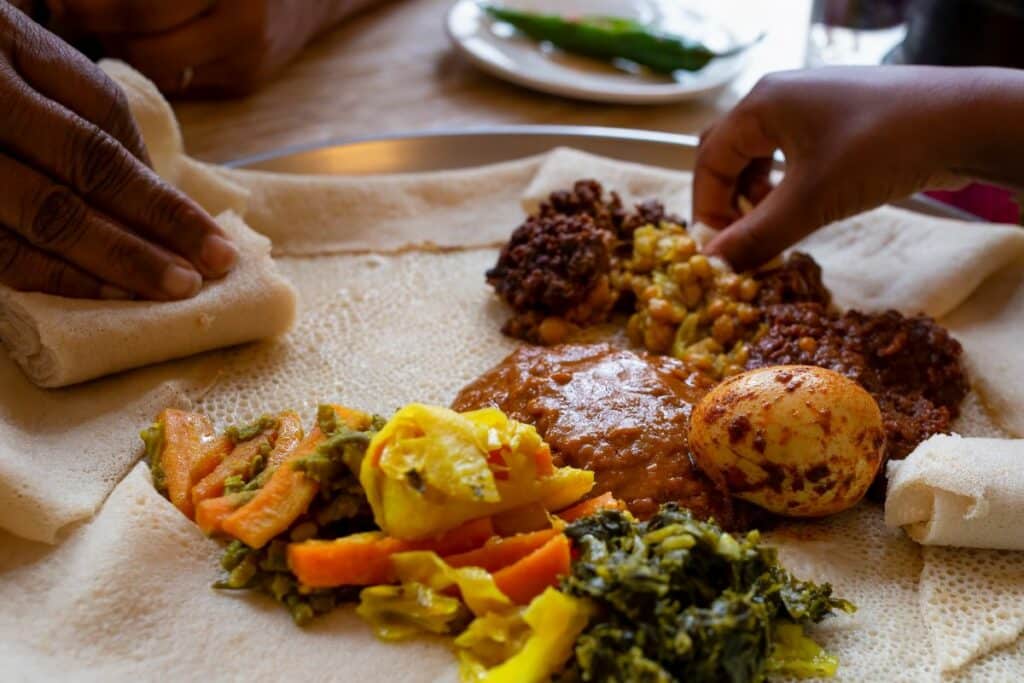Ethiopia is home to a variety of cultures, with over 80 regional ethnic groups that practice their own unique customs and traditions. Each region has its own language and cultural practices, so visitors to Ethiopia should familiarize themselves with the customs before traveling. From religious festivities and traditional music, to colorful clothing and festive meals, read on to learn more about the customs of Ethiopia’s regions.
Table of Contents
Oromia
The Oromos are the largest ethnic group in Ethiopia, making up around 33 percent of the country’s population. This ethnic group is known for their music, known as qaallu, which usually consists of poetry accompanied by two drums and sometimes a horn. They also practice a type of dance known as the chaati, which involves standing in a circle and clapping in beat with a song.
Oromos also celebrate numerous traditional holidays, such as the day for honoring ancestors and the previously mentioned qaallu. During these festive days, people wear colorful clothing and decorate the village in accordance with their traditional beliefs.
Amhara
The Amhara ethnic group is the country’s second-largest and lives mainly in the central highlands. They are characterized by their love of music and color, and celebrate numerous religious and secular festivals throughout the year. Some of the most popular are the Meskel Festival and Enkutatash, a celebration of New Year’s Day.
The Amhara also celebrate Christmas and New Year’s Eve with great fanfare. As part of the festivities, they go caroling and exchange gifts, usually food or clothing. During the festivities they also typically enjoy traditional Ethiopian dishes like Injera, tibs and kitfo.
Tigray
The Tigray ethnic group is located in the northeastern part of Ethiopia and is renowned for its vibrant culture and customs. The Tigray are well known for their hospitality and love of traditional music and dance. Traditional dances range from the zefit, which is performed to celebrate a newborn child, to the shagoye-kele, which is a religious dance associated with funerals.
The Tigray are also known for their delicious cuisine and often make their meals using spicy sauces as flavorings. Popular dishes include doro wot (a spicy chicken stew) and shiro (a stew made with ground chickpeas). During religious festivals, households typically prepare traditional dishes such as injera, a type of flatbread, and tibs, a popular stew.
Gurage
The Gurage ethnic group is located in the central highlands of Ethiopia and is known for its elaborate and colorful clothing. Women often adorn themselves with beads and bright fabrics, while men wear traditional white linen. Fermented beverages like aminga, made from barley and corn, and tej, made from fermented honey, form a part of the popular Gurage cuisine.
The Gurage are also known for their festive celebrations, and it is common for villagers to dance, eat, and socialize during special holidays. During important religious events such as Christmas and Easter, people generally dress up in their traditional clothing and enjoy elaborate feasts of local foods.
Konso
The Konso are located in the south of Ethiopia and are a largely agricultural society. These ethnic people live in villages made up of huts and thrive in the mountainous terrain. The Konso are known for their colorful clothing, which includes hand-woven wool and decorative turbans, and for their dancing and traditional music. They often build waka poles in the villages, which everyone dances around.
The traditional Konso meals usually consist of maize, sorghum, and soybeans, combined with local fruits and spices. For festive occasions, the Konso enjoy mutton, lentils, and honey, as well as traditional dishes like kolo (a boiled porridge).
Conclusion
Each of Ethiopia’s ethnic groups has its own customs and traditions, and traveling to Ethiopia is an excellent way to experience the cultures firsthand. Make sure to research these customs before you get there in order to gain the most out of your experience.

